This post may contain affiliate links. To learn more check my disclosure page.
I can’t think of anything better than a pasta dish made with homemade noodles. It’s tough to find truly great homemade gluten-free pasta out at restaurants, so I knew I had to find a way to make it for myself. This gluten-free pasta recipe uses simple techniques to produce soft and silky noodles that cook up to perfection and taste amazing! My whole family likes to get involved in making this recipe!
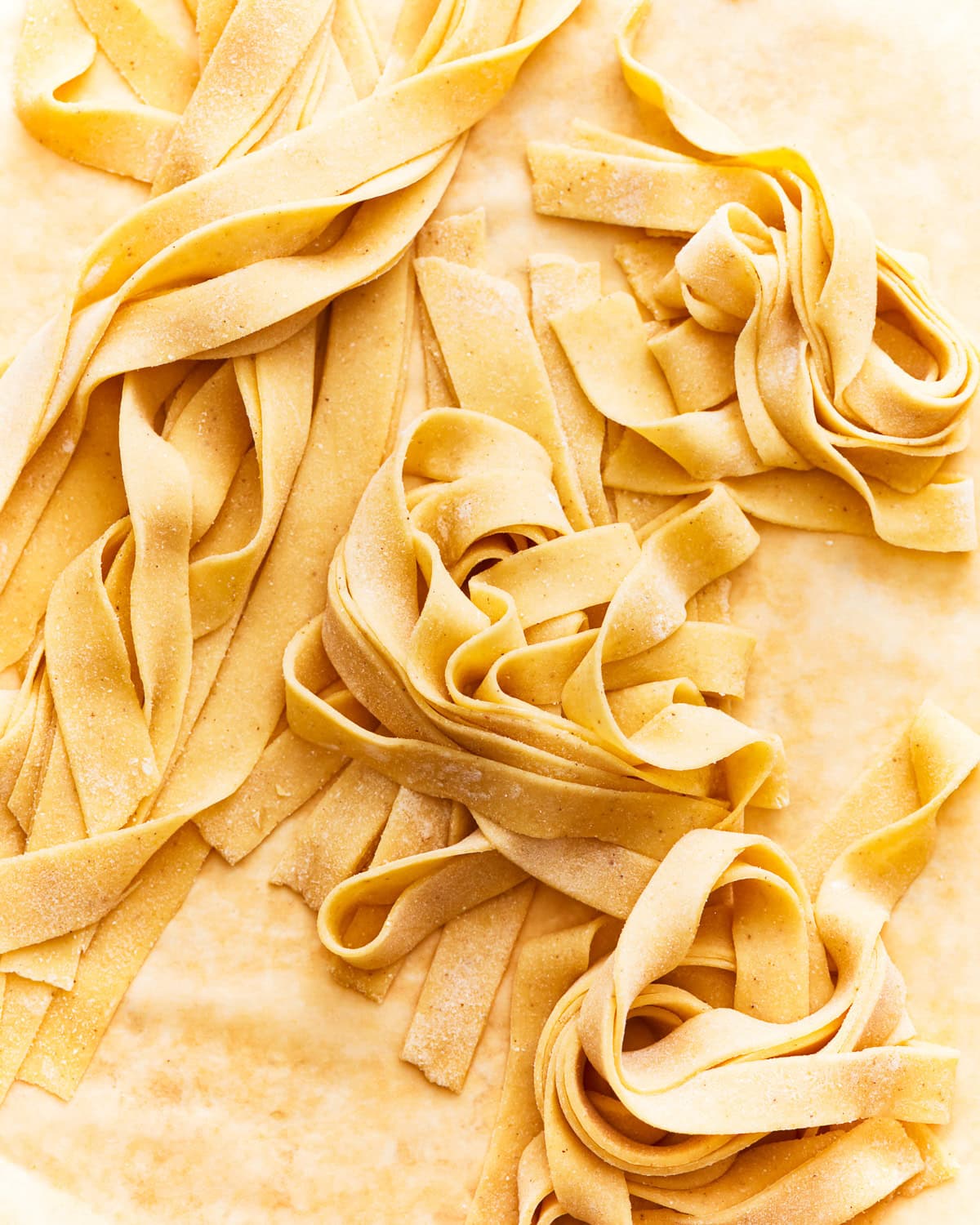
Gluten-Free Pasta Recipe
Store-bought pasta is great in a pinch (we even have a great guide on buying gluten-free pasta!), but homemade is what really makes dinner special for me. It’s taken a lot of testing to get the flavor and texture of this homemade gluten-free pasta just right, but I think I’ve finally nailed it! And the best part is, you don’t need any complicated tools to make it.
Ingredients
- Gluten-Free All-Purpose Flour with Xanthan Gum: Gives the pasta structure. If your gluten-free flour blend does not already contain xanthan gum, you will need to add some in to create an elastic dough.
- Fine Sea Salt: Enhances the natural flavor of the pasta.
- Eggs: Add moisture, protein, and fat to the dough that helps enrich it and creates a smooth texture.
- Water: Adds extra hydration to the dough to help it come together.
- Olive Oil: Adds extra fat to the dough to help create a smoother texture.

Tips and Suggestions
- I recommend Pillsbury Gluten-Free All-Purpose flour or Better Batter Cup for Cup flour for this recipe. I cannot guarantee results with other brands.
- The dough should feel neither dry nor sticky, so adjust with flour and water until you reach the desired consistency.
- The pasta dough should be smooth, elastic, and slightly tacky to the touch after kneading. It should hold its shape when formed into a ball and bounce back when gently pressed with your finger. Knead the dough for about 5-7 minutes until it reaches this consistency.
- Don’t overcook the pasta. Fresh pasta takes way less time to cook than dried.
- Dry pasta by hanging it on a pasta drying rack or laying it flat on a lightly floured surface. Allow the pasta to dry completely, then store in an airtight container in a cool, dry place for up to 2 weeks. Rehydrate the dried pasta by cooking it in boiling water for about 6-7 minutes until tender.
Do I Need A Pasta Machine?
Nope! All you need are your two hands and a rolling pin to create delicious homemade gluten-free pasta.
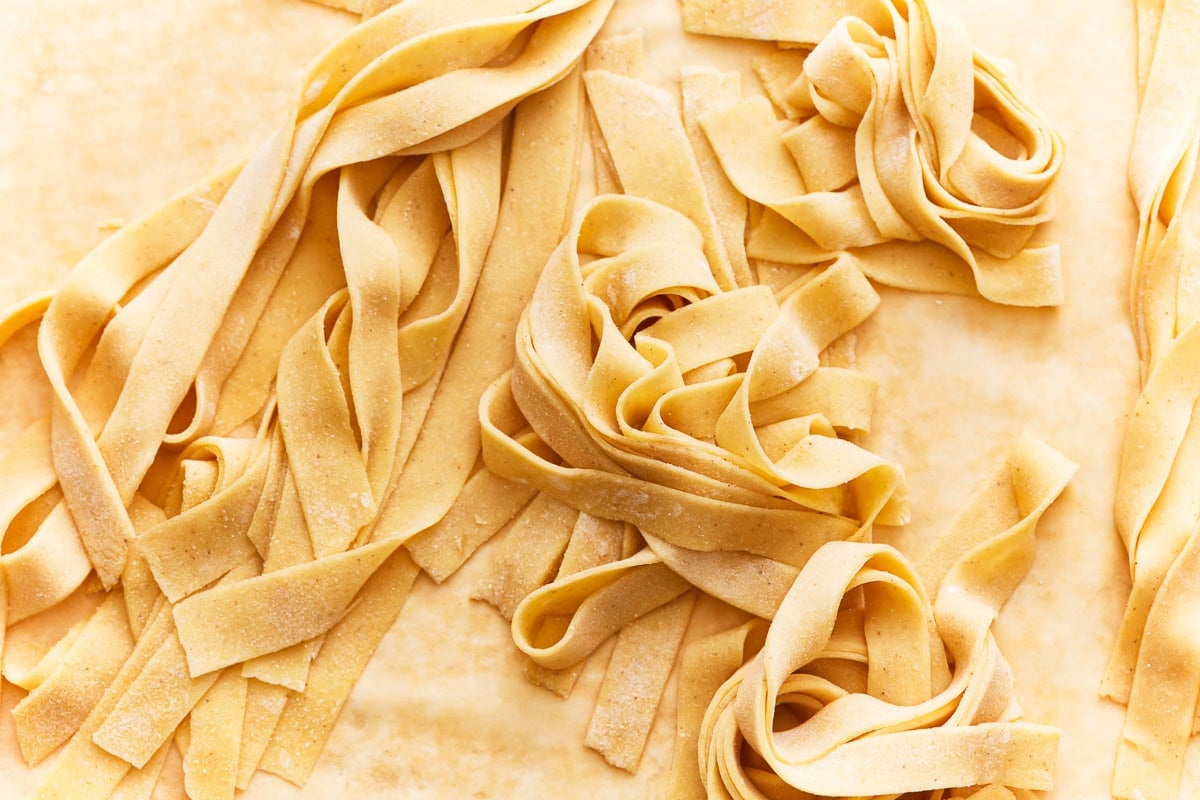
Can I Make It Vegan?
I do not recommend attempting to make this gluten-free pasta without eggs or with an egg replacer. The eggs do a lot of the heavy lifting in terms of creating a smooth, silky texture.
Why Is My Pasta Dough Crumbling Apart?
If your dough is crumbling apart when you try to roll it out, it likely needs to be worked for a bit longer. Knead it until it is smooth, then wrap and let it rest once more before trying to roll it out again.
Storage Instructions
Store homemade gluten-free pasta dough tightly wrapped in the refrigerator for up to 3 days or in the freezer for up to 3 months. Let thaw overnight in the refrigerator before shaping and cooking.
Store cooked gluten-free pasta in an airtight container in the refrigerator for up to 3 days.
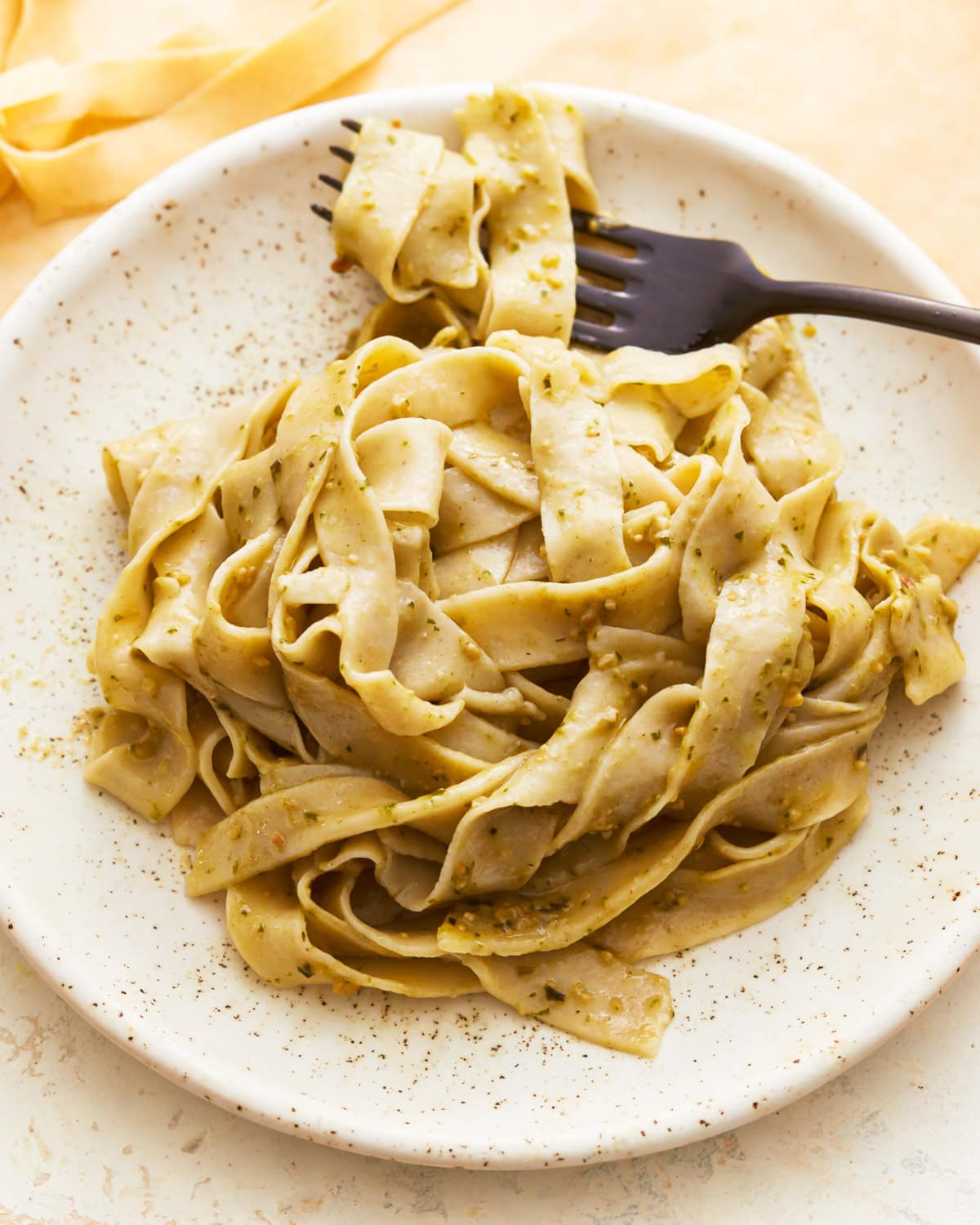
Gluten-Free Pasta Recipes to Try!
- Gluten-Free Lasagna
- Gluten-Free Baked Mac and Cheese
- Gluten-Free Italian Pasta Salad
- Gluten-Free Spaghetti Sauce
Homemade Gluten-Free Pasta
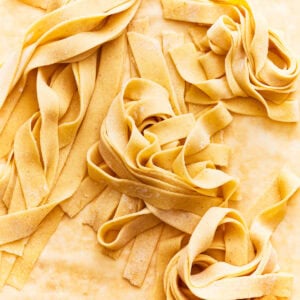
Ingredients
- 1 3/4 cups gluten-free all-purpose flour with xanthan gum
- 1 teaspoon xanthan gum, omit if your blend already contains it
- 1/2 teaspoon fine sea salt
- 3 large eggs
- 2 tablespoons water
- 1 tablespoon olive oil
Instructions
- In a large mixing bowl, combine the gluten-free flour, xanthan gum (if needed), and fine sea salt. Mix well to evenly distribute the ingredients.
- Create a well in the center of the flour mixture. Crack the eggs into the well. Add the water and olive oil to the well with the eggs.
- Using a fork or your fingers, gradually incorporate the flour mixture into the wet ingredients until a shaggy dough forms.
- Once the dough starts to come together, transfer it to a clean, lightly floured surface. Knead the dough for about 5-7 minutes until it becomes smooth and elastic. If the dough feels too dry, add a little more water, a teaspoon at a time. If it's too sticky, add a sprinkle of gluten-free flour.
- Once the dough is well kneaded, shape it into a ball and cover it with plastic wrap. Let it rest at room temperature for about 30 minutes to allow the gluten-free flour to hydrate and the dough to relax.
- After resting, divide the dough into 4 portions (about 104 g each) for easier handling. Flatten each portion into a disk with your hands.
- Lightly dust a sheet of parchment paper and rolling pin with gluten-free flour. Roll out each portion of dough into a thin rectangular sheet, about 1/16 to 1/8 inch thick.
- Use a sharp knife or pizza cutter to cut the rolled-out dough into your desired shape and size of pasta, such as fettuccine, linguine, or lasagna sheets. Repeat the rolling and cutting process with the remaining portions of dough until all the pasta is formed.
- To cook the gluten-free pasta, bring a large pot of salted water to a rolling boil. Add the pasta and cook for about 2-3 minutes, or until al dente. Drain the cooked pasta and serve immediately with your favorite sauce or toppings.
Notes
- I recommend Pillsbury Gluten-Free All-Purpose flour or Better Batter Cup for Cup flour for this recipe. I cannot guarantee results with other brands.
- The dough should feel neither dry nor sticky, so adjust with flour and water until you reach the desired consistency.
- The pasta dough should be smooth, elastic, and slightly tacky to the touch after kneading. It should hold its shape when formed into a ball and bounce back when gently pressed with your finger. Knead the dough for about 5-7 minutes until it reaches this consistency.
- Don’t overcook the pasta. Fresh pasta takes way less time to cook than dried.
- Dry pasta by hanging it on a pasta drying rack or laying it flat on a lightly floured surface. Allow the pasta to dry completely, then store in an airtight container in a cool, dry place for up to 2 weeks. Rehydrate the dried pasta by cooking it in boiling water for about 6-7 minutes until tender.
- To store: Wrap the dough tightly in plastic wrap and place it in the refrigerator for up to 3 days. Cooked pasta will also keep in the refrigerator for up to 3 days.
- To freeze: Wrap the dough tightly in plastic wrap and place it in the freezer for up to 3 months.
Nutrition
Nutrition information is automatically calculated, so should only be used as an approximation.
How To Make Gluten-Free Pasta Step-by-Step
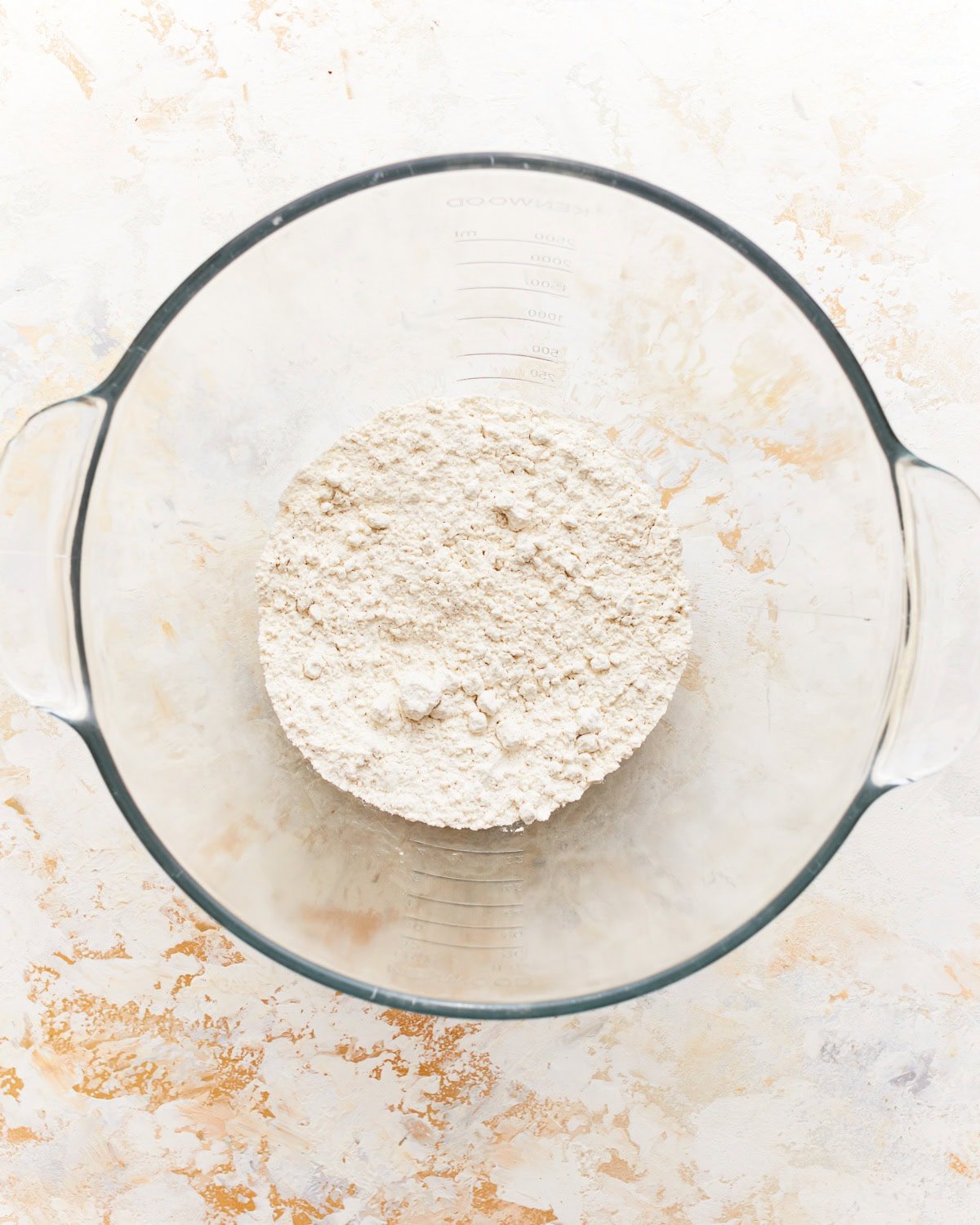
In a large mixing bowl, combine 1 3/4 cups of gluten-free flour with xanthan gum (add 1 teaspoon of xanthan gum if your blend doesn’t include it) and 1/2 teaspoon of fine sea salt. Mix well to evenly distribute the ingredients.
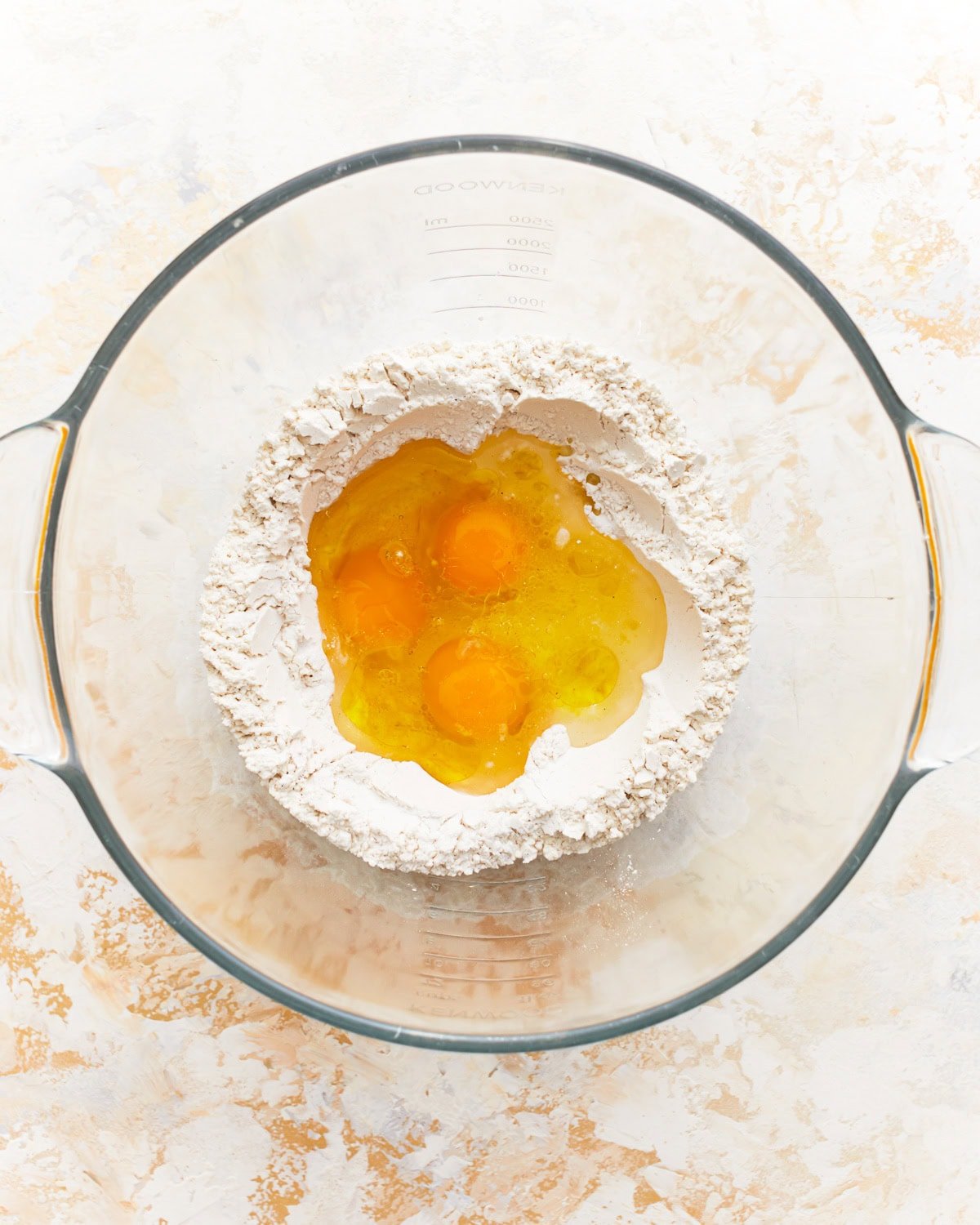
Create a well in the center of the flour mixture. Crack 3 large eggs into the well. Add 2 tablespoons of water and 1 tablespoon of olive oil to the well with the eggs.
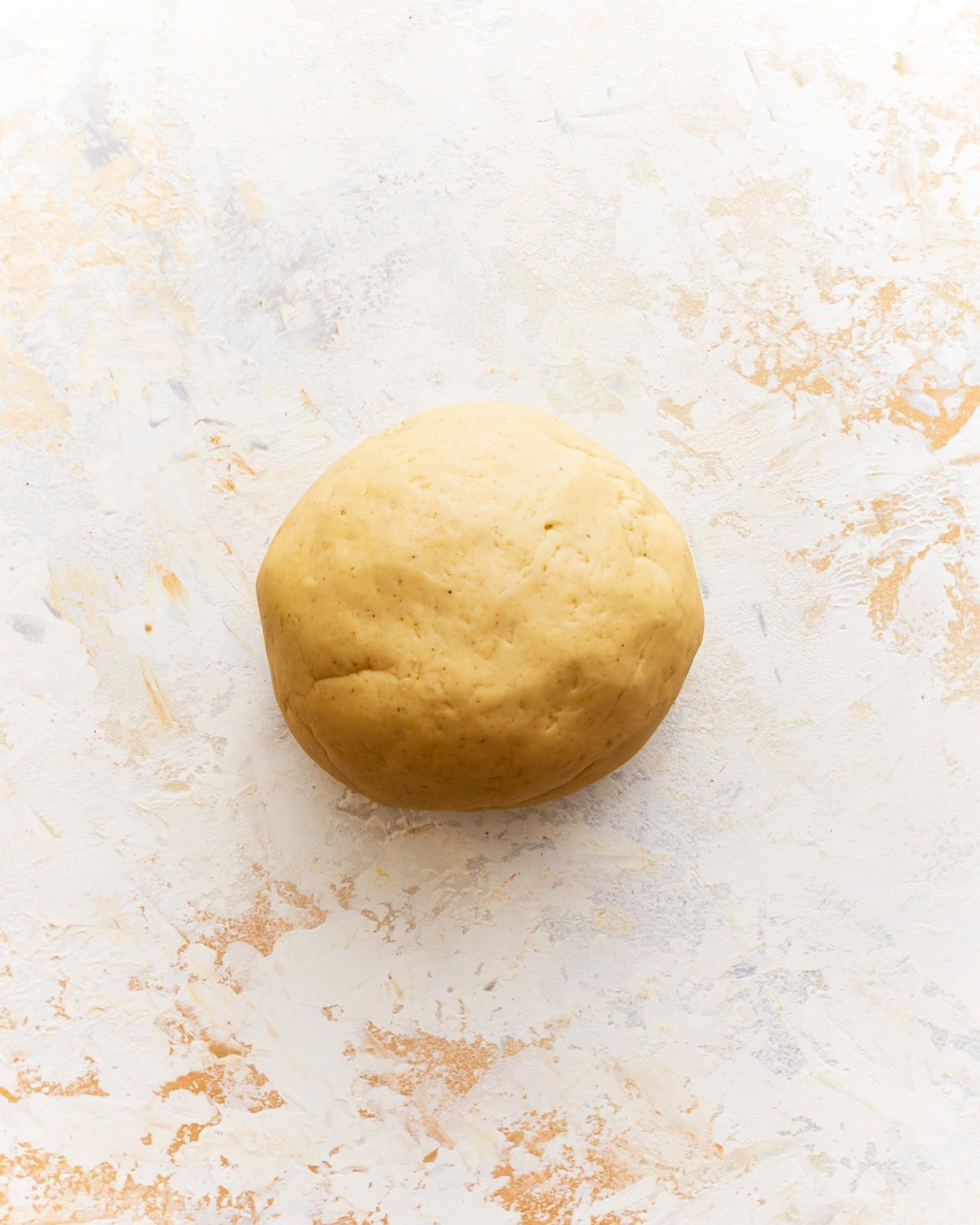
Using a fork or your fingers, gradually incorporate the flour mixture into the wet ingredients until a shaggy dough forms. Once the dough starts to come together, transfer it to a clean, lightly floured surface. Knead the dough for about 5-7 minutes until it becomes smooth and elastic. If the dough feels too dry, add a little more water, a teaspoon at a time. If it’s too sticky, add a sprinkle of gluten-free flour.
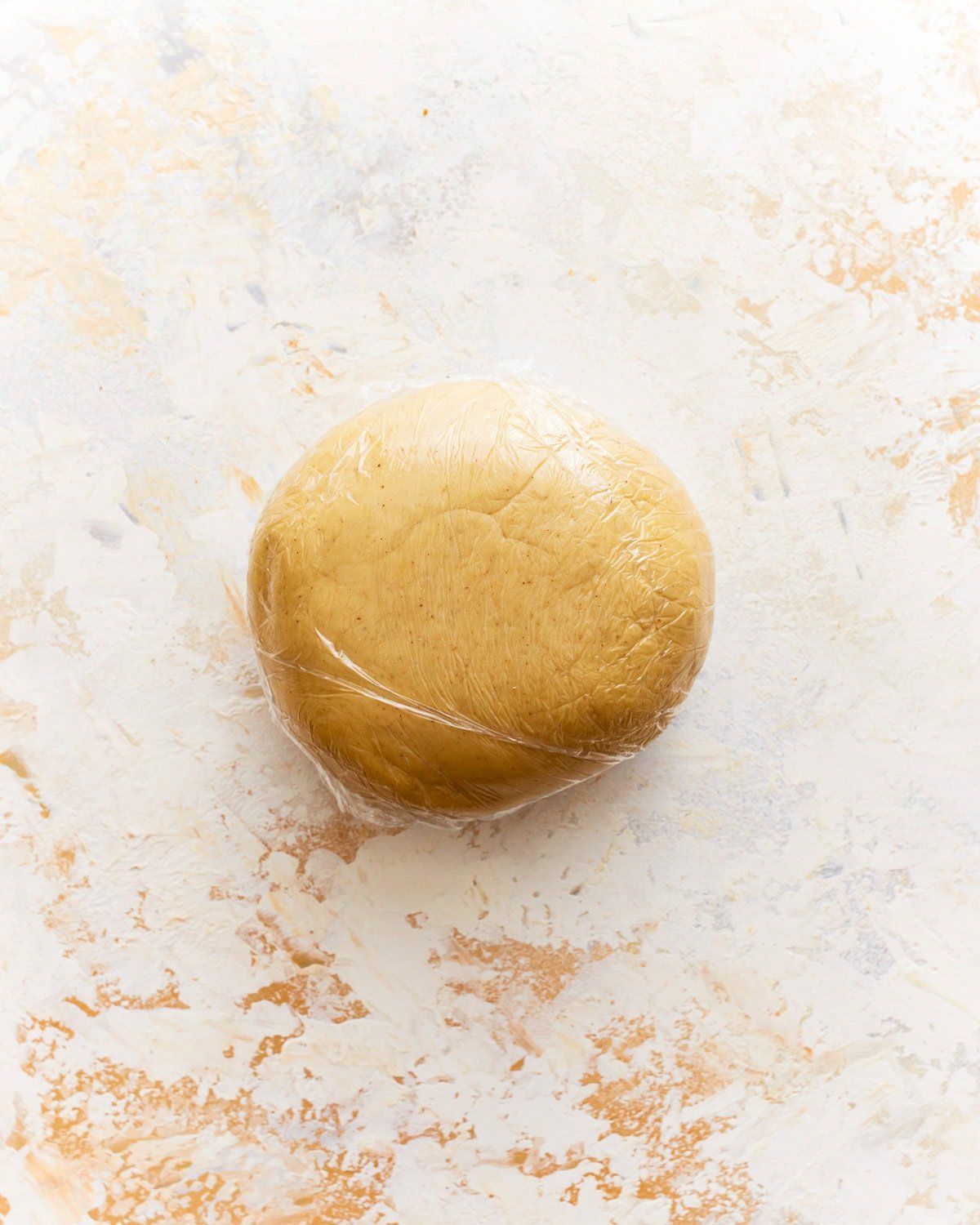
Once the dough is well kneaded, shape it into a ball and cover it with plastic wrap. Let it rest at room temperature for about 30 minutes to allow the gluten-free flour to hydrate and the dough to relax.
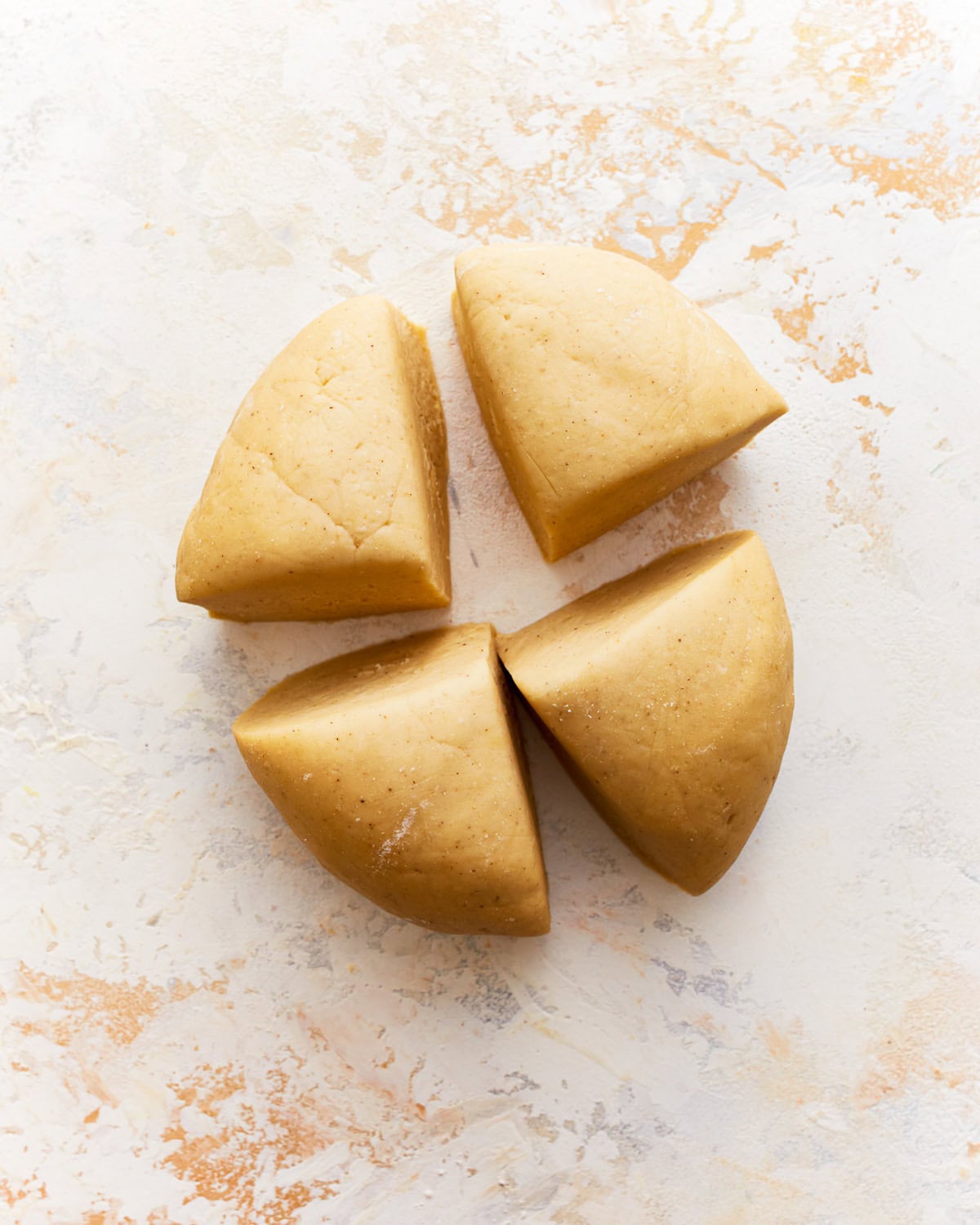
After resting, divide the dough into 4 portions (about 104 g each) for easier handling. Flatten each portion into a disk with your hands.
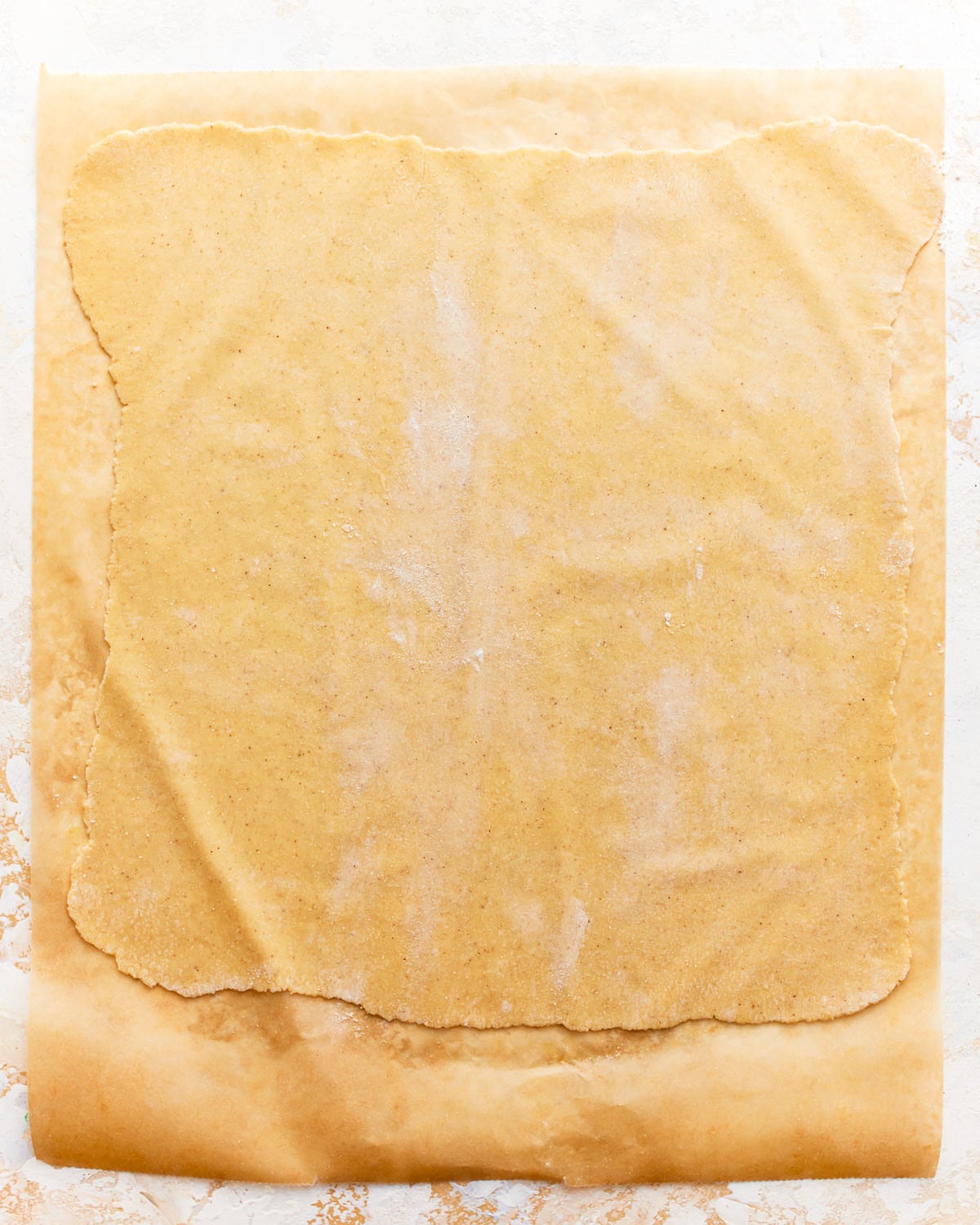
Lightly dust a sheet of parchment paper and rolling pin with gluten-free flour. Roll out each portion of dough into a thin rectangular sheet, about 1/16 to 1/8 inch thick.
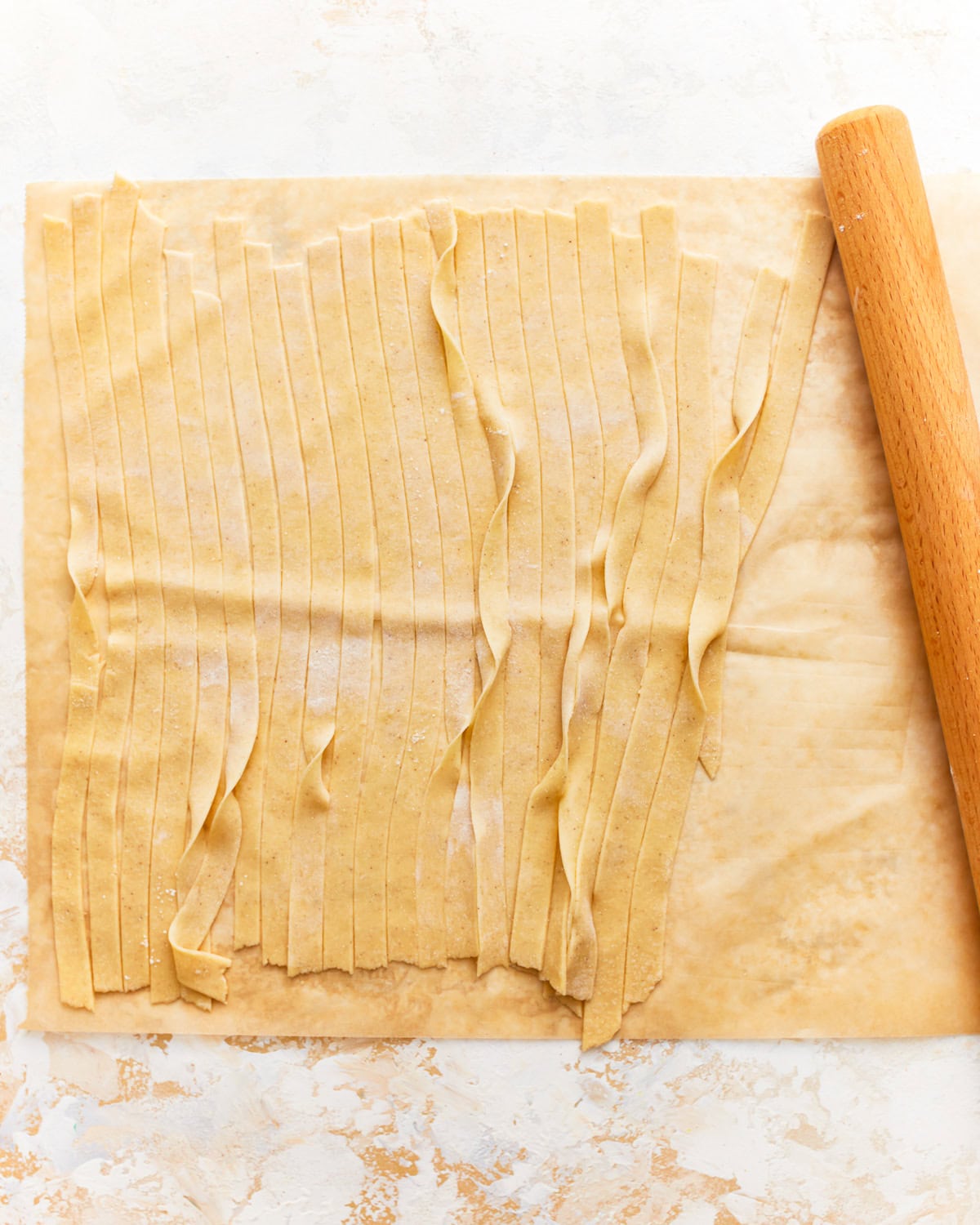
Use a sharp knife or pizza cutter to cut the rolled-out dough into your desired shape and size of pasta, such as fettuccine, linguine, or lasagna sheets. Repeat the rolling and cutting process with the remaining portions of dough until all the pasta is formed.
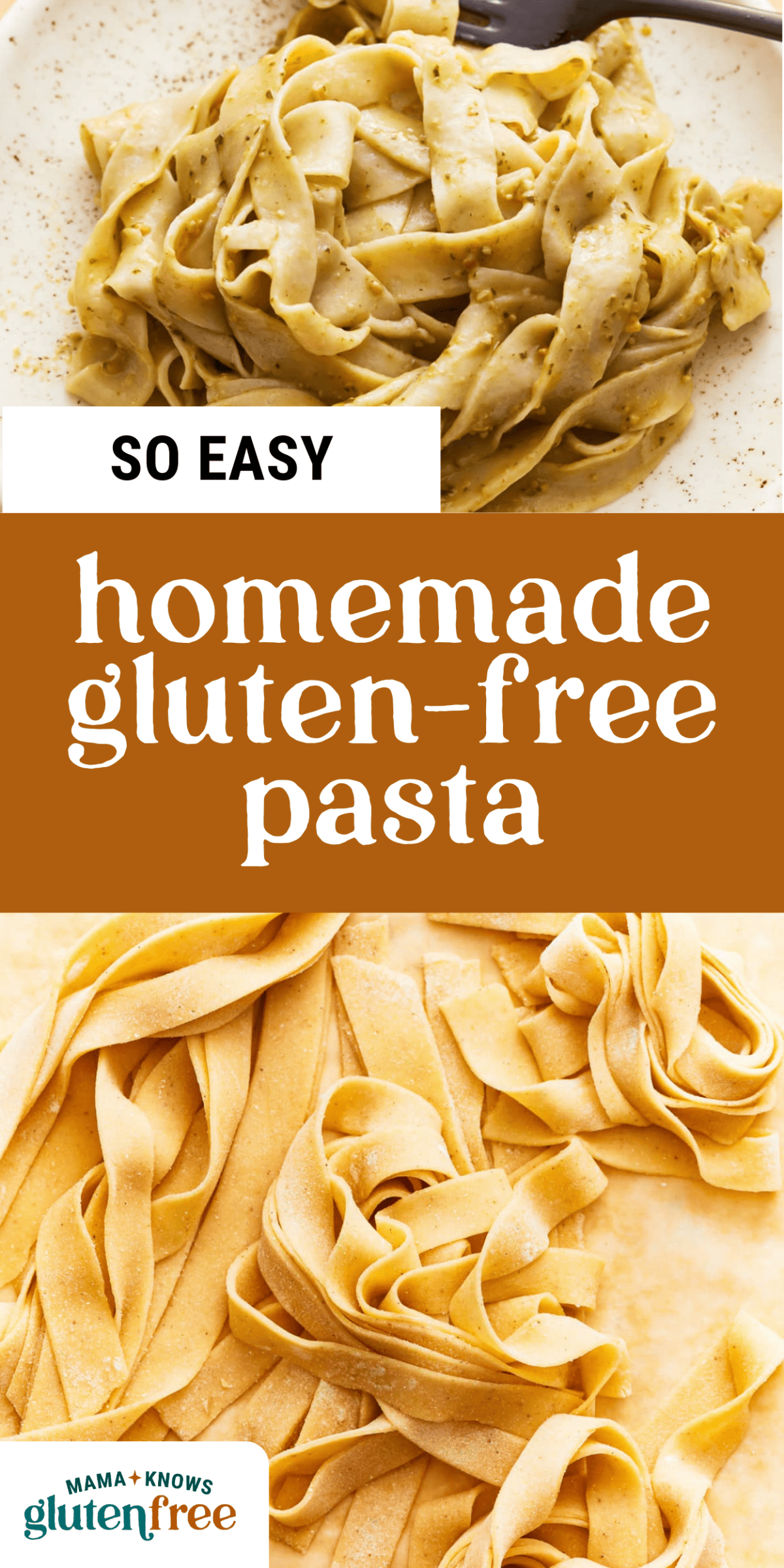
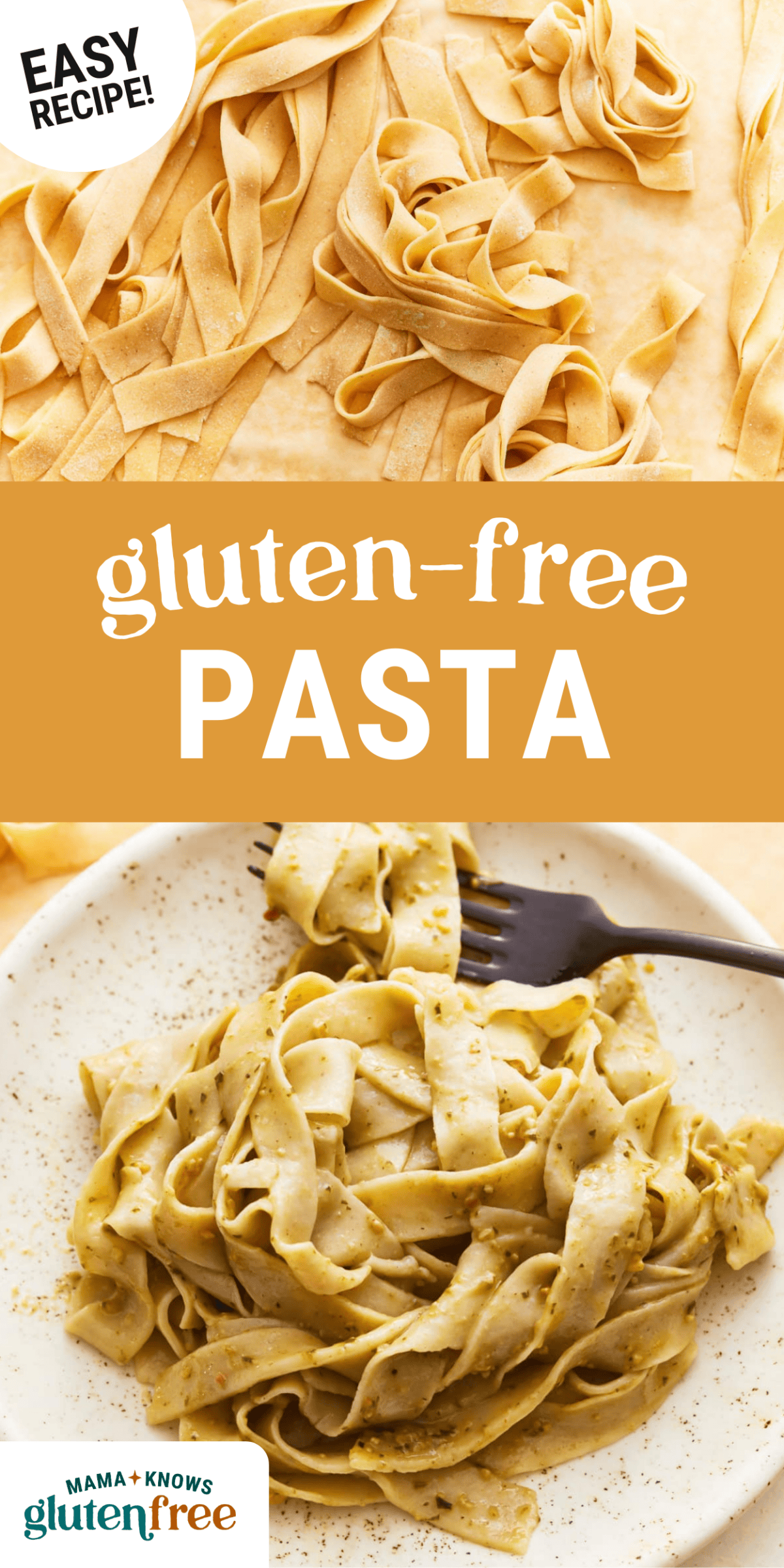
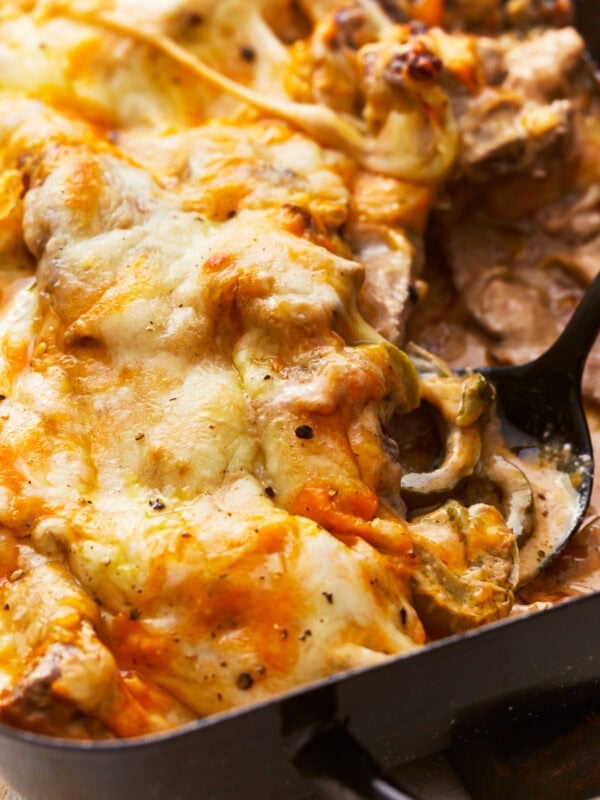
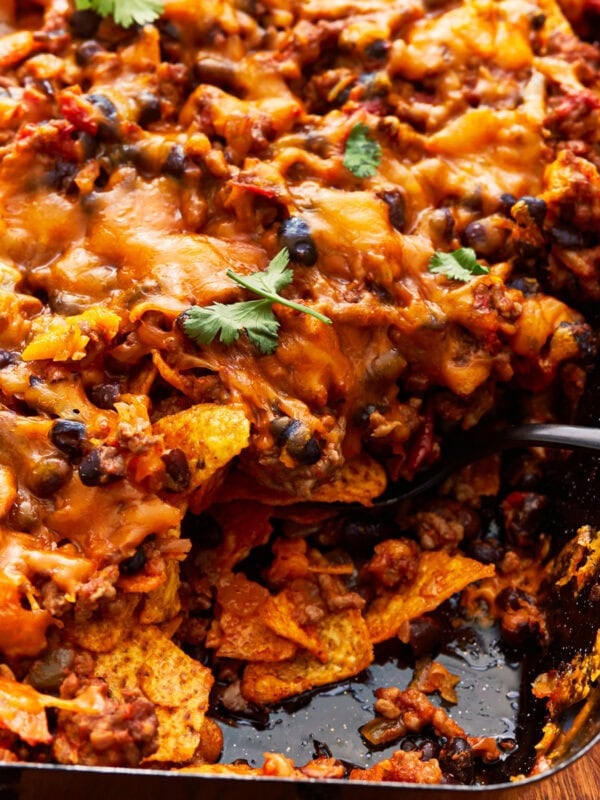
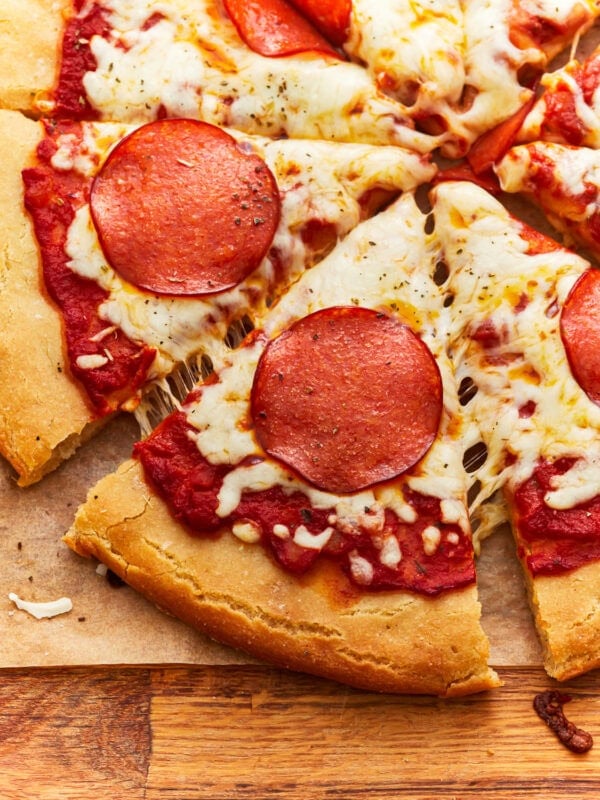
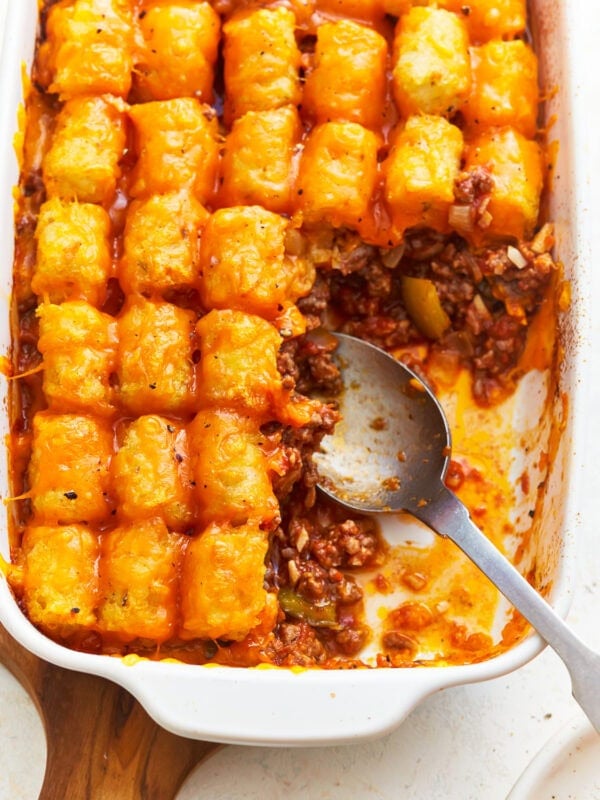






Was so easy to make..I’ve been GF for years now and was always afraid to even try this. Thanks so much. Will do this for years to come